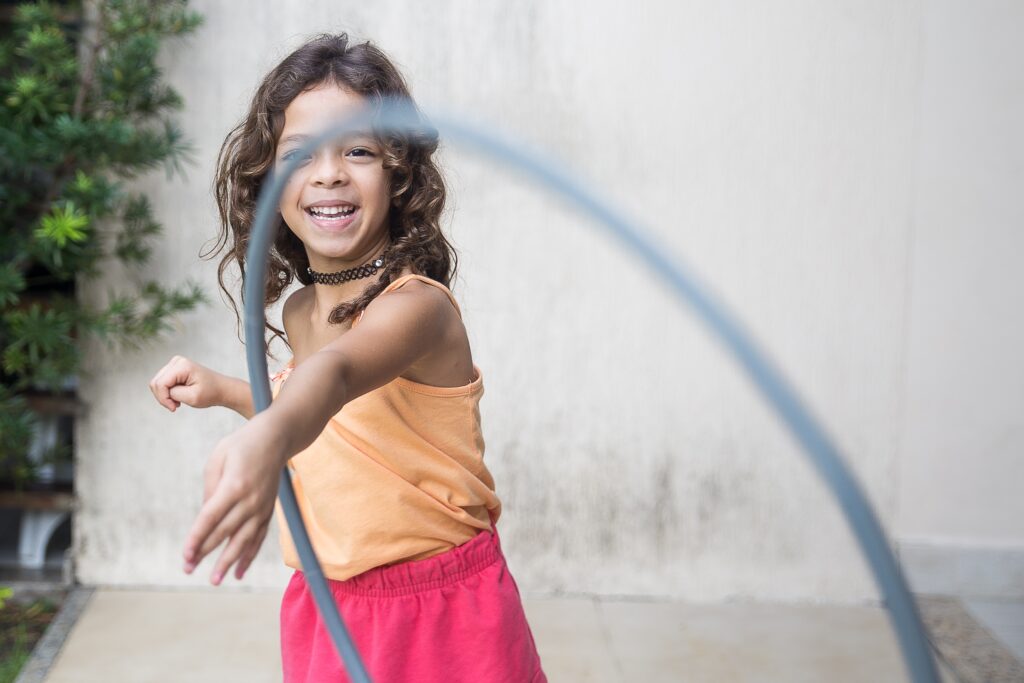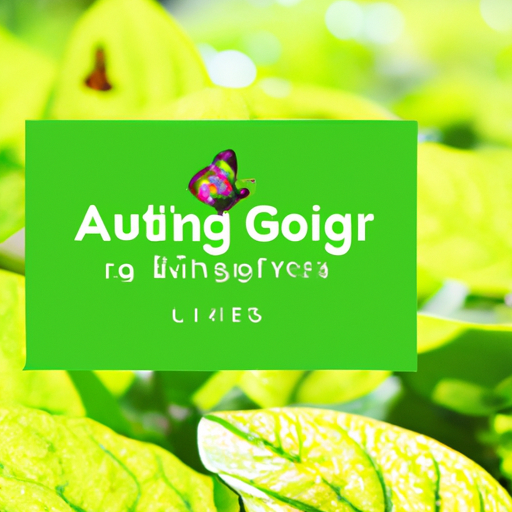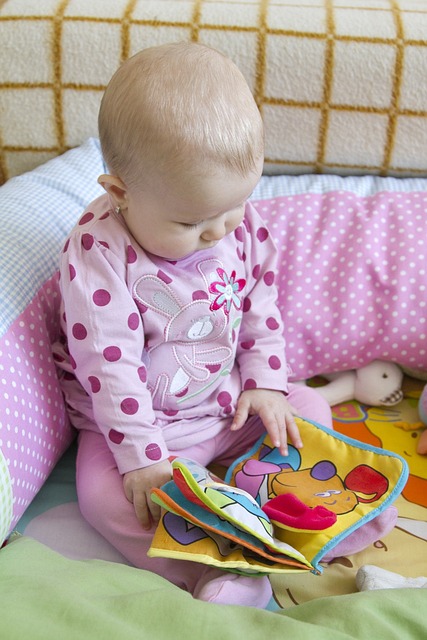In this article, we’ll explore the wonderful world of introducing your baby to the great outdoors. You’ll learn some tips and tricks on how to make outdoor adventures enjoyable and safe for your little one. We’ll cover everything from choosing the right outdoor activities to preparing for different weather conditions. So, get ready to embark on a journey of exploration and bonding with your baby in nature!

Choosing the Right Time
Determining the Appropriate Age
Introducing your baby to the great outdoors can be an exciting and enriching experience. However, it is important to choose the right time to embark on this adventure. The appropriate age for taking your infant outdoors depends on various factors, such as their overall health, development, and the recommendations of your pediatrician.
Most healthcare professionals suggest waiting until your baby is at least three months old before exposing them to the outdoors. At this age, their immune system is beginning to develop, and they are better equipped to handle exposure to different environments. Additionally, older babies tend to have better head control and can sit upright with support, which makes outdoor exploration safer and more enjoyable.
Considering the Season
The season in which you plan to introduce your baby to the great outdoors plays a crucial role in their comfort and safety. It is essential to consider the prevailing weather conditions and choose a season that is conducive to outdoor activities.
Spring and autumn are generally ideal seasons for outdoor adventures with a baby. The weather is usually mild, offering a comfortable temperature for both you and your little one. It is advisable to avoid extreme weather conditions, such as scorching heat during summer or bitter cold in winter, as these can pose various health risks to your baby.
Taking into Account the Weather Conditions
In addition to considering the season, it is vital to assess the daily weather conditions before venturing outside with your baby. Dressing your little one appropriately for the weather ensures their comfort and protects them from potential health issues.
On hot and sunny days, dress your baby in lightweight, breathable clothing that covers their delicate skin. Apply a broad-spectrum sunscreen with a high SPF to protect them from harmful UV rays. Additionally, make sure to pack a sun hat and sunglasses to shield their face and eyes. Remember to seek shade whenever possible and stay hydrated by offering regular feeds or water if your baby is old enough.
When the weather turns chilly, dress your baby in layers to regulate their body temperature. Use a hat, mittens, and booties to keep their extremities warm. Consider using a reliable baby carrier or stroller with a built-in cover to shield them from wind and rain. It is always a good idea to bring along a cozy blanket for added warmth and comfort.
Preparing the Essentials
Selecting the Right Baby Gear
Before heading outdoors, it is crucial to select the appropriate baby gear that ensures your little one’s safety and comfort. A sturdy stroller with all-terrain wheels and good suspension is a great investment. It allows you to navigate different outdoor surfaces smoothly while providing a comfortable ride for your baby.
If you prefer a more hands-on approach, consider using a baby carrier or sling. This allows you to keep your baby close to you while leaving your hands free for other activities. Look for carriers that offer proper back and neck support to ensure your baby’s comfort.
Packing Sun Protection Essentials
When venturing outdoors, sun protection is of utmost importance, especially for your baby’s delicate skin. Make sure to pack essential sun protection items such as sunscreen, sun hats, and sunglasses.
Choose a broad-spectrum sunscreen with a minimum SPF of 30 and apply it generously to your baby’s exposed skin. Opt for sunscreen specifically formulated for infants, as their sensitive skin requires gentle and hypoallergenic products. Remember to reapply sunscreen every two hours or after your baby has been in the water.
A sun hat with a wide brim provides additional protection for your baby’s face and neck. Look for hats with UPF (Ultraviolet Protection Factor) to ensure maximum sun protection. Sunglasses designed for infants are also a great way to shield their sensitive eyes from harmful UV rays.
Bringing Adequate Snacks and Drinks
Outdoor adventures are bound to work up an appetite, so be sure to pack ample snacks and drinks for your baby. Breastfeeding or bottle-feeding is an excellent way to nourish your baby while on the go. Remember to bring extra bottles, formula, or expressed milk if necessary.
If your baby has started solid foods, pack some healthy and easy-to-eat snacks like cut-up fruits, whole-grain crackers, or small finger foods. Make sure to bring an insulated bag with ice packs to keep perishable snacks fresh and prevent spoilage.
Hydration is essential, especially on warm days. Offer your baby water or diluted fruit juice in a sippy cup or bottle at regular intervals. If your baby is exclusively breastfed, they may not require additional fluids in the first six months, but consult with your pediatrician to be sure.

Selecting Suitable Outdoor Locations
Researching Baby-Friendly Parks
When introducing your baby to the great outdoors, it is crucial to select suitable outdoor locations that cater to their needs. Researching baby-friendly parks in your area can help you find spaces specifically designed for families with young children.
Look for parks that offer amenities such as shaded areas, clean restroom facilities with diaper-changing stations, and designated breastfeeding areas. Some parks also have age-appropriate play areas and trails suitable for strollers or baby carriers. Checking online resources or talking to fellow parents can provide valuable insights into baby-friendly park options.
Checking for Nearby Amenities
In addition to baby-friendly parks, it is essential to consider nearby amenities that can enhance your outdoor experience with your baby. Look for locations that have accessible picnic areas with tables, benches, and shelters where you can take breaks and feed your baby comfortably.
Accessible parking spaces near the entrance make it convenient for parents with strollers or carriers to navigate the area. Having easy access to drinking water fountains or hydration stations ensures you can keep your baby hydrated without any hassle.
Ensuring Safety and Accessibility
Safety and accessibility are crucial when selecting outdoor locations for your baby. Look for parks or recreational areas that are well-maintained, have clearly marked paths, and are free from potential hazards such as steep slopes, deep bodies of water, or dense vegetation.
Make sure the park or location is easily accessible, especially if you plan to bring a stroller or baby carrier. Smooth, even surfaces are essential for strollers, and wide paths accommodate multiple families comfortably. It is also a good idea to find parks or locations with nearby parking areas to minimize the distance you need to carry your baby and their gear.
Planning Outdoor Activities
Engaging in Nature Walks
Going for a nature walk with your baby is an excellent way to introduce them to the sights, sounds, and smells of the great outdoors. Look for parks or trails that offer gentle, paved paths suitable for strolling or jogging with a stroller.
Take your time and let your baby explore their surroundings. Encourage them to touch leaves and flowers (while supervising to ensure they don’t put anything harmful in their mouths). Point out different animals, birds, or insects you come across, and describe their colors or sounds to stimulate your baby’s senses.
Enjoying Picnics and Playtime
Picnics are a fun and relaxing way to enjoy the outdoors with your baby. Pack a picnic blanket and some age-appropriate toys, such as soft balls, stacking cups, or teething rings, to keep your little one entertained in between bites.
Choose a shady spot under a tree or bring a portable sunshade to create a comfortable space for your baby. Spread out the blanket and introduce your baby to new tastes and textures with finger foods or small portions of baby-friendly snacks. Engage with your baby through interactive play, building towers with blocks or rolling a ball back and forth.
Exploring Water-Based Activities
As your baby grows, they might be ready to explore water-based activities. Splashing in the pool or playing in shallow water can be a great source of sensory stimulation and enjoyment.
Look for baby-friendly swimming pools or shallow water play areas that have been specifically designed for infants and young children. These areas often feature water fountains, small slides, or gentle sprays, making them a safe and entertaining option for your little one.
Remember to always closely supervise your baby when they are near water, no matter how shallow it may be. Use appropriate flotation devices or swim diapers as necessary and ensure that the water temperature is suitable for your baby’s comfort.

Ensuring Baby’s Comfort
Dressing Appropriately for the Outdoors
Proper attire is essential for your baby’s comfort during outdoor adventures. Dress them in layers, especially during transitional seasons when the weather can change throughout the day. This allows you to adjust their clothing according to temperature fluctuations.
Choose breathable fabrics like cotton or bamboo as the innermost layer to ensure your baby stays cool and comfortable. Add a light sweater or jacket over a onesie or t-shirt for cooler temperatures, and have a waterproof outer layer like a raincoat in case of unexpected rain showers.
Consider the length of your outdoor activity when dressing your baby. If you plan to be outside for an extended period, provide them with additional warmth by adding a hat, mittens, and booties. Conversely, if you expect to be indoors or in the shade for most of the time, dress your baby in lighter clothing to prevent them from overheating.
Providing Protection from Insects
When spending time outdoors, it is crucial to protect your baby from insect bites. Insects like mosquitoes and ticks carry diseases that can be harmful to infants, so taking preventive measures is essential.
Apply insect repellent specifically designed for babies to exposed areas of your baby’s skin. Opt for formulas that are DEET-free and contain natural ingredients like citronella or eucalyptus. Avoid applying repellent near your baby’s eyes, mouth, or hands, as they are prone to putting their hands in their mouths.
If you are in an area known for ticks, dress your baby in light-colored clothing to make it easier to spot any ticks that may attach themselves. Tuck their pants into their socks and check their body thoroughly after spending time in grassy or wooded areas.
Ensuring Comfortable Napping Arrangements
Outdoor activities can be tiring for your baby, so it is essential to provide them with comfortable napping arrangements when needed. A lightweight and portable baby crib or bassinet is an excellent solution for providing a safe and familiar space for your baby to sleep.
Ensure that the crib or bassinet offers sufficient ventilation to keep your baby cool during nap time. Position it away from direct sunlight to create a shady spot. A fitted sheet and a comfortable blanket or sleep sack will help keep your baby cozy during their nap.
If you plan to be away from your vehicle or home during nap time, consider bringing a portable baby monitor to keep an eye on your sleeping baby. This allows you to continue enjoying outdoor activities while ensuring your baby’s safety and comfort.
Practicing Safety Measures
Keeping First Aid Essentials Handy
When venturing into the great outdoors, it is essential to be prepared for any minor accidents or injuries. Keep a well-stocked first aid kit with you at all times, including items such as bandages, antiseptic wipes, pain relievers, and any necessary medications your baby may require.
Familiarize yourself with basic first aid procedures, such as CPR and the Heimlich maneuver, in case of emergencies. It is also a good idea to have a list of emergency contacts readily available in case you need to seek medical assistance quickly.
Maintaining Hygiene in Outdoor Settings
Maintaining proper hygiene when outdoors with your baby is essential for their health and well-being. Carry hand sanitizers or antibacterial wipes to clean your hands before feeding your baby or after using communal facilities like restrooms.
If diaper changing facilities are not available, bring a portable changing pad or a clean, waterproof mat to create a clean surface. Dispose of dirty diapers properly and bring along plastic bags to contain any soiled items until you can dispose of them in a sanitary manner.
If your baby likes to explore with their hands or put items in their mouth, be mindful of the surfaces they touch. Avoid allowing your baby to put their hands in their mouth after touching potentially contaminated surfaces, such as public handrails or benches.
Being Vigilant of Potential Hazards
When outdoors, it is crucial to be vigilant of potential hazards that may pose a risk to your baby’s safety. Be mindful of uneven terrain or obstacles that could cause trips or falls. Always keep a close eye on your baby to ensure they do not wander into dangerous areas or come into contact with hazardous objects.
Be cautious of plants or flowers that may be toxic if ingested. Keep your baby at a safe distance from any plant or tree that may have thorns, spines, or harmful sap. It is also important to teach your baby not to put anything they find outside into their mouth.

Stimulating Baby’s Senses
Exposing Them to Different Scents
Outdoor environments offer a multitude of scents that can stimulate your baby’s sense of smell. Take the opportunity to expose your baby to various scents like freshly cut grass, flowers, or the crisp scent of the forest. Describe the smells to your baby and encourage them to take deep breaths, which can help develop their olfactory senses.
Avoid areas with strong chemical odors or pollutants, as these can be harmful to your baby’s respiratory system. Opt for locations with clean and fresh air, allowing your baby to fully experience the natural scents surrounding them.
Encouraging Observation of Wildlife
The great outdoors provides a wealth of wildlife for your baby to observe and learn from. Point out different birds, squirrels, or other animals you encounter and describe their colors, sounds, or movements.
Encourage your baby to mimic the sounds they hear, whether it be the chirping of birds or the croaking of frogs. This can foster their language development and stimulate their auditory senses.
Use age-appropriate books or toys that feature different animals to help your baby recognize and associate them with their natural habitats. By fostering an appreciation for wildlife from an early age, you can lay the foundation for a lifelong love of nature.
Letting Them Feel Different Textures
Nature offers a wide array of textures that your baby can explore through touch. Encourage them to feel different surfaces like tree bark, smooth stones, or blades of grass. Describe the textures to them and help them differentiate between rough and smooth or soft and hard.
Consider bringing along touch and feel books or toys that feature different textures. Let your baby explore these items while outside to provide a multisensory experience.
Making Outdoor Time Educational
Teaching About Nature and its Importance
While enjoying the great outdoors, take the opportunity to teach your baby about the importance of nature and its role in our lives. Explain how trees provide oxygen, how flowers attract bees for pollination, and how animals play a vital role in maintaining the balance of ecosystems.
Use simple language and descriptive terms. For example, instead of stating, “Trees are important,” you can say, “Look at the tall, green trees. They provide oxygen for us to breathe, just like how we need food to stay healthy.”
Encourage your baby to notice the beauty and diversity of nature. Point out different plants, flowers, or trees, and explain how they contribute to the natural world. By instilling a love and respect for nature from an early age, you are nurturing your baby’s connection to the environment.
Incorporating Educational Toys and Games
Engaging your baby in educational toys and games outdoors can enhance their learning experience. Look for toys or puzzles that introduce concepts such as shapes, colors, or animals.
Use natural materials found outdoors, like leaves or rocks, to create simple sensory or counting activities. For example, you can encourage your baby to sort leaves based on their color or size, or count rocks as you come across them during your outdoor exploration.
Singing nursery rhymes or nature-themed songs can also be a fun and educational activity. Choose songs that involve movement or mimic animal sounds, enhancing your baby’s auditory and motor skills.
Encouraging Curiosity and Exploratory Behaviors
Outdoor experiences provide endless opportunities for your baby to satisfy their curiosity and engage in exploratory behaviors. Allow them to touch different textures, play with outdoor toys, and investigate their surroundings.
Follow your baby’s lead and encourage their natural curiosity by asking open-ended questions. For example, as they examine a leaf, you can ask, “What color is the leaf? How does it feel in your hands?” This helps develop their cognitive and problem-solving skills.
Allowing your baby to explore at their own pace fosters a sense of independence and self-confidence. Be patient and provide reassurance as they navigate new experiences and encounter unfamiliar environments or creatures.

Capturing and Preserving Memories
Taking Photographs and Videos
Outdoor adventures with your baby create memories worth preserving. Capture these precious moments by taking photographs and videos that you can look back on in the years to come.
Invest in a good quality camera or use your smartphone to document your outdoor experiences. Look for opportunities to capture candid shots of your baby smiling, laughing, or exploring their surroundings. Focus on detail shots like tiny fingers reaching for objects or your baby’s face lighting up with joy.
Consider creating a dedicated photo album or digital gallery to organize and showcase these memories. As your baby grows, you can revisit these photos together and share stories about their first encounters with the great outdoors.
Creating a Nature Journal or Scrapbook
A nature journal or scrapbook is a creative and engaging way to document your baby’s outdoor experiences and observations. Use this as an opportunity to bond and create a keepsake that you can cherish together.
Collect leaves, flowers, or other natural materials during your outdoor adventures. Press and dry them before incorporating them into your journal or scrapbook. Encourage your baby to make marks or scribbles using non-toxic crayons or markers to represent their sensory experiences.
Write down the date, location, and any interesting observations or discoveries your baby makes during your outdoor activities. Include photographs or sketches to further enhance your nature journal or scrapbook. This tangible record will serve as a beautiful reminder of the joy and wonder of your baby’s first interactions with nature.
Collecting Souvenirs and Keepsakes
Collecting souvenirs and keepsakes during your outdoor adventures can be a delightful way to remember these special moments. Look for small treasures such as seashells, smooth rocks, or feathers that your baby can handle and explore.
Establish a collection box or jar where you can store these items. Each time you go on an outdoor adventure, encourage your baby to find a special token to add to the collection. Over time, this collection will serve as a tangible representation of your baby’s outdoor experiences and provide a glimpse into the natural wonders you have encountered together.
Conclusion
Introducing your baby to the great outdoors is a wonderful way to nurture their curiosity, sensory development, and love for nature. By choosing the right time, preparing the essentials, selecting suitable locations, and engaging in outdoor activities, you are providing your baby with valuable experiences that will shape their understanding of the world around them.
Remember to prioritize your baby’s comfort and safety by dressing them appropriately, protecting them from insects, and ensuring comfortable napping arrangements. Practice safety measures, stimulate their senses, and make outdoor time educational through interaction with nature and the use of age-appropriate toys and games.
Capture these precious moments through photographs and videos, and consider creating a nature journal or scrapbook to preserve memories. Collecting souvenirs and keepsakes adds an extra layer of nostalgia to these outdoor adventures.
Introducing your baby to the great outdoors is not only beneficial for their development but also a wonderful way to create lasting memories as a family. Embrace the beauty of nature, explore, and watch as your baby’s eyes light up with wonder at the marvels of the natural world.





